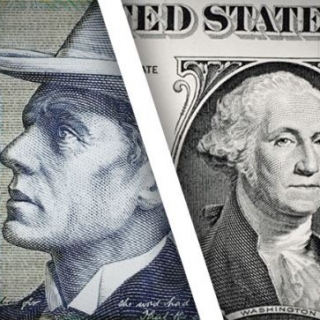


The AUD/USD pair weakened for the third consecutive trading day on Wednesday (August 20th). The Australian currency pair slumped near 0.6425 as antipodean currencies underperformed their peers.
The Australian dollar faced sharp selling pressure as financial market participants expected the Reserve Bank of Australia (RBA) to cut interest rates again for the remainder of the year. Dovish bets from the RBA intensified as inflation in Australia has approached the central bank's desired range of 2%-3%.
Earlier, the People's Bank of China (PBOC) maintained its benchmark interest rate. China's monetary policy significantly impacts the Australian dollar, given its economy's heavy reliance on exports to Beijing.
Meanwhile, investors awaited the preliminary Australia-United States (US) private sector Purchasing Managers' Index (PMI) data for August, scheduled for release on Thursday.
On Wednesday, investors will focus on the minutes of the Federal Open Market Committee's (FOMC) July policy meeting, which will be released at 18:00 GMT. At the meeting, the Fed maintained interest rates in the 4.25%-4.50% range and stated that a "wait-and-see" approach was optimal amid a lack of clarity regarding the potential consequences of tariffs on inflation and the economy.
Ahead of the FOMC minutes, the US Dollar Index (DXY), which tracks the greenback against a basket of six major currencies, was trading near a weekly high around 98.00. (alg)
Source: FXstreet
The Australian dollar (AUD) moved steadily against the US dollar (USD) on Thursday following the People's Bank of China (PBOC) interest rate decision. The Chinese central bank held the Loan Prime Rate...
The Australian dollar fell to around $0.652 on Monday (November 17) after the US dollar strengthened sharply. The greenback's strengthening occurred because several Fed officials began to doubt the ne...
The Australian dollar held steady around $0.651 on Thursday, holding onto recent gains after the September trade surplus widened sharply to AUD 3.94 billion (vs. August's revised AUD 1.11 billion), be...
The Australian dollar weakened to around $0.647, hitting its lowest level in eleven weeks. This decline continued as risk-off sentiment in global markets intensified, overshadowing the Reserve Bank of...
AUD/USD firms as traders brace for Australia Q3 inflation data and Fed decision The Australian Dollar (AUD) edges higher against the US Dollar (USD) on Tuesday, extending its winning streak for the f...
The global silver price today (November 21) remained around $50-51 per troy ounce, slightly weaker than the previous day but still well above its early-year level. Fundamentally, silver's movement is again being pulled in two directions: on the one...
The Japanese yen held steady near 157 per dollar on Friday (November 21st), after previously weakening steadily. The currency began to "put on the brakes" after Finance Minister Satsuki Katayama signaled that the government could intervene if the...
The Hong Kong stock market opened lower in the morning session, with the benchmark Hang Seng Index falling 375 points, or 1.45%, to 25,460. Selling pressure was felt across the entire market. The Hang Seng China Enterprises Index fell 1.43% to...
 European markets opened lower on Tuesday (November 18th) as global markets weakened amid renewed concerns over AI-related stocks.
The pan-European...
European markets opened lower on Tuesday (November 18th) as global markets weakened amid renewed concerns over AI-related stocks.
The pan-European...
 Initial jobless claims in the United States reached 232,000 for the week ending October 18, according to data from the US Department of Labor...
Initial jobless claims in the United States reached 232,000 for the week ending October 18, according to data from the US Department of Labor...
 A divided Federal Reserve cut interest rates last month even as many policymakers cautioned that lowering borrowing costs further could risk...
A divided Federal Reserve cut interest rates last month even as many policymakers cautioned that lowering borrowing costs further could risk...
 US stocks finished higher on a volatile Wednesday session, reversing some of the sharp selling from the prior four sessions as markets digested a...
US stocks finished higher on a volatile Wednesday session, reversing some of the sharp selling from the prior four sessions as markets digested a...